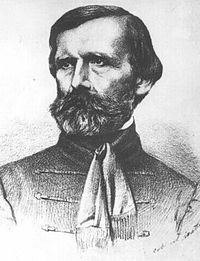Name Ferenc Reitter | Role Architect | |
 | ||
Died December 9, 1874, Budapest, Hungary | ||
By Budapest, the Blue Danube waltz in 09 Jun 2013
Ferenc Reitter (March 1, 1813 in Temesvar, Hungary (now Timisoara, Romania) - December 9, 1874 in Budapest, Hungary) was a Hungarian architect and engineer who is credited with constructing several landmarks in Budapest.
Contents
Career
Reitter finished his studies at Budapest Engineering Institute in 1833 and until 1844 worked on the mapping and study of the Tisza and Maros rivers. He also took part in the channelling of the Danube river.
He had a major role in the capital's department of public works during the rebuilding of Budapest during the second half of the nineteenth century. As director he was largely responsible for the building of the city's quays, channelling of the riverbanks and the planning of the ring roads and axial roads, Andrassy ut in particular. This was to become the most important thoroughfare in Pest. Its construction was first considered in 1871 and it opened to traffic in 1896 to coincide with the millenarian anniversary of the Magyars' arrival in the Carpathian Basin in 1896.
Reitter planned the route to follow a major swampy branch of the Danube river, which swings eastward in a large arch from Danube to Danube over a distance of 4.141 meters. The canal passed through a suburban district of narrow streets and, at the time, Reitter also considered making the backwater into a navigable canal to improve the air quality and lessen pollution.
However, a solid thoroughfare was agreed upon and its construction took place at the same time as that of Sugar ut, latterly Andrassy Avenue.
In 1865 Reitter became a member of the Hungarian Academy of Sciences.
